My weekend in Venice’s little-visited doppelganger, 15 miles across the Lagoon

Suggest to somebody in Chioggia that their home town is like a “Little Venice” and you will receive the following response.
“Little Venice?” they will say, mock outraged. “Venice is a Little Chioggia, more like.”
Chioggia (pronounced “kee-oh-dja”) is a small fishing town on the southern end of the Venetian Lagoon. So while the comparisons with Venice are partly due to proximity, they are also because Chioggia, caught in the right light, at a certain angle, can bear a striking resemblance to its famous neighbour.
Seeking out lookalike places, or “dupes”, is an emerging travel trend. According to a 2023 industry report by Expedia, tourists are increasingly seeking quieter but similar alternatives to popular holiday spots. Utrecht instead of Amsterdam, Girona rather than Barcelona. That kind of thing.
But what if you take it a step further? With Chioggia, I felt like I had landed on the dupe to end all dupes. Even my most well-travelled colleagues hadn’t heard of it. So I booked a stay on appearances alone. The question was whether there would be substance behind the aesthetic similarities, or if looks can be deceiving.
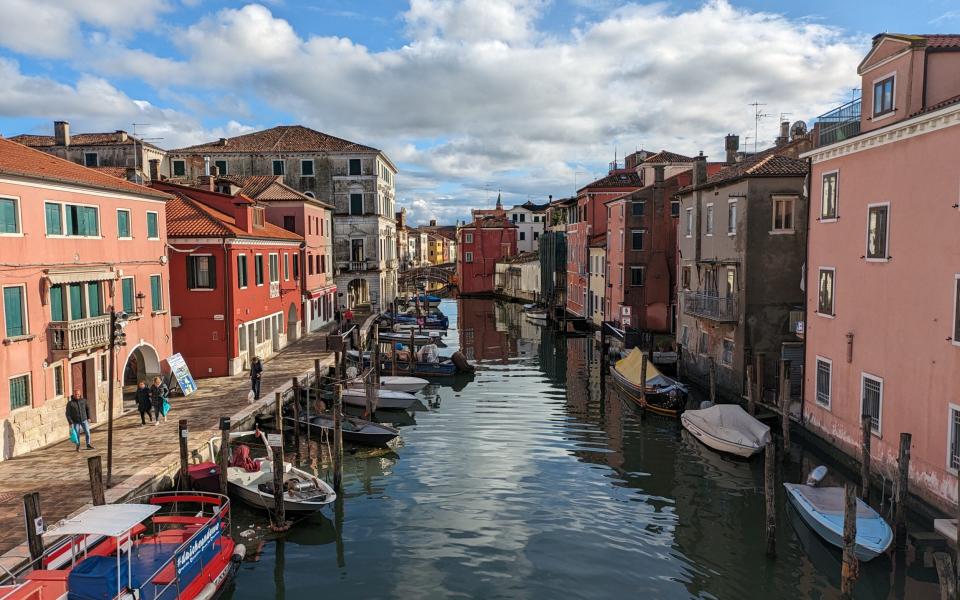
First impressions suggested the latter may be the case. I travelled to Chioggia by bus, arriving on a quiet road on the edge of town lined with postwar apartments with wind-scabbed exteriors. A man argued with his fat dog as if it owed him money, so I walked the other way, fearing I was the one who had been duped.
At the Hotel Grande Italia, my digs for the next two nights, I asked the receptionist where she would recommend for dinner. She looked out of the window, winced and pulled out a tourist map, flagging a few restaurants in that spidery upside-down calligraphy unique to European receptionists.
“These are good, but it’s raining, so will they be open?” her shrug didn’t fill me with much hope. When she handed over the map I spotted there were only three canals in Chioggia. On the other side was a map of Venice, which has 150.
The histories of Chioggia and Venice are similarly conjoined. The earliest mentions of the former are from around the 6th century AD, when it was part of the Byzantine Empire. The population of the town grew alongside the thriving industries of fishing, agriculture (the Chioggia radish is a point of local pride), salt trading and textiles. Chioggia was long disputed by Venice and Genoa, finally becoming subordinate to Venice following the Naval War of Chioggia (1378–81).
When the rain subsided I set out to wander the surroundings, beginning at Ponte Vigo, a brilliant bridge at the head of the town made of white Istrian stone. The bridge, like a miniature Rialto, has views north to the lagoon, but I was more drawn to what lay south: the Canal Vena, Chioggia’s Grand Canal, which stretches the length of the town.
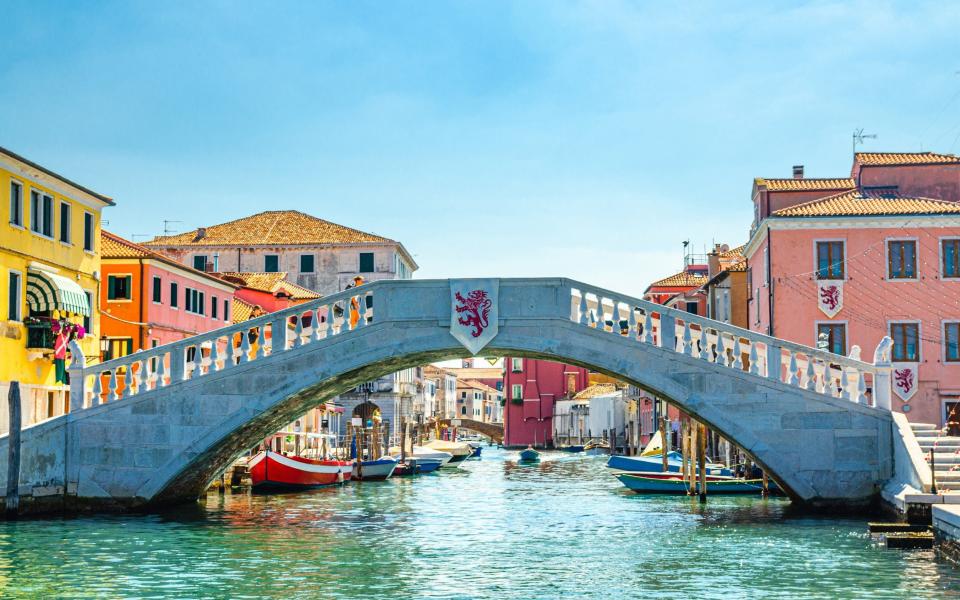
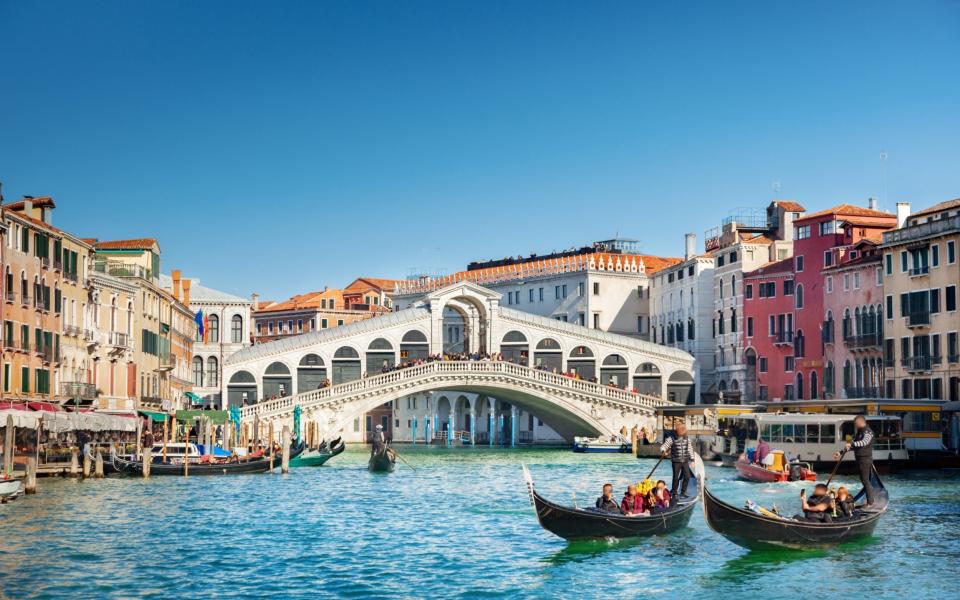
Along the canal I found motorised fishing boats tied to old wooden mooring posts, with a number of pedestrianised footbridges crossing the waterway and leading to shadowy calli (alleyways) where colourful clothes hung out to dry on balconies. It is from these nine bridges that you can capture “that” view, the Venetian impression of pastel-washed buildings reflecting in the water, with a Romanesque clocktower in the background. So I did just that, and sent it to a friend. “Guess where I am?” I asked.
Opposite the fish market there was a free table outside La Chic Chetteria, one of the many bacari along the canal, where I ordered a selection of excellent seafood cicchetti (Venetian tapas) and a beer. A moment of peace, impossible to capture in central Venice, was interrupted when three men started up a boat whose engine appeared to have a terminal lung condition. The waitress shouted something to the man at the helm, who called back, grinning, with a cigarette pressed between his lips, before zooming up the canal.
“Who were those guys?” I asked.
“Pirates,” she said. “Illegal fishermen.”
The more time I spent in Chioggia, the more I learnt that this workaday, scrappy spirit is all part of the city’s identity. In fact the Chioggiotti take great pride in being “veraci” – earthy, a bit rough – compared to the frilly, high-society sensibilities of their northerly neighbours. Many of the old buildings along the Canal Vena were crumbling into the water, leaving the impression of a town that has been time-battered, rather than time-warped.

I asked Roberta Boscolo, who grew up in Chioggia and has also lived in Venice, what defines the town.
“Chioggia is authentic,” she replied. Whether she thought Venice is “authentic” or not was left unsaid.
Venetians, in turn, have long mocked the Chioggiotti, all the way back to the Venetian playwright Carlo Goldoni, who depicted them as argumentative simpletons with a penchant for a quarrel. And the teasing continues. Today, Venetians nickname Chioggia’s emblem, the lion of St Mark, which sits atop a column on Piazza Vena, “el Gato de Ciòsa” (the cat of Chioggia) for its small size.
The Chioggiotti take this in good humour. El Gato? The cat was designed to be diminutive to undermine the authority of their Venetian rulers, they say. And as for that Goldoni play? It is performed in Chioggia for the first five days of August every year, and is always sold out.
Wandering Chioggia’s wide central boulevard, Corso del Popolo, I got the sense of a town where tourism exists at a manageable simmer. When I entered one dark souvenir store the shopkeeper slowly walked to the corner of the room to flick on the light. I left with two Murano glasses, around half the price of what you’d find in Venice, which he packaged up in an old shoebox. Later that evening, during dinner, a hawker ignored all of the other diners, who were Italians, and tried to sell me a plastic flower before realising I was on my own.
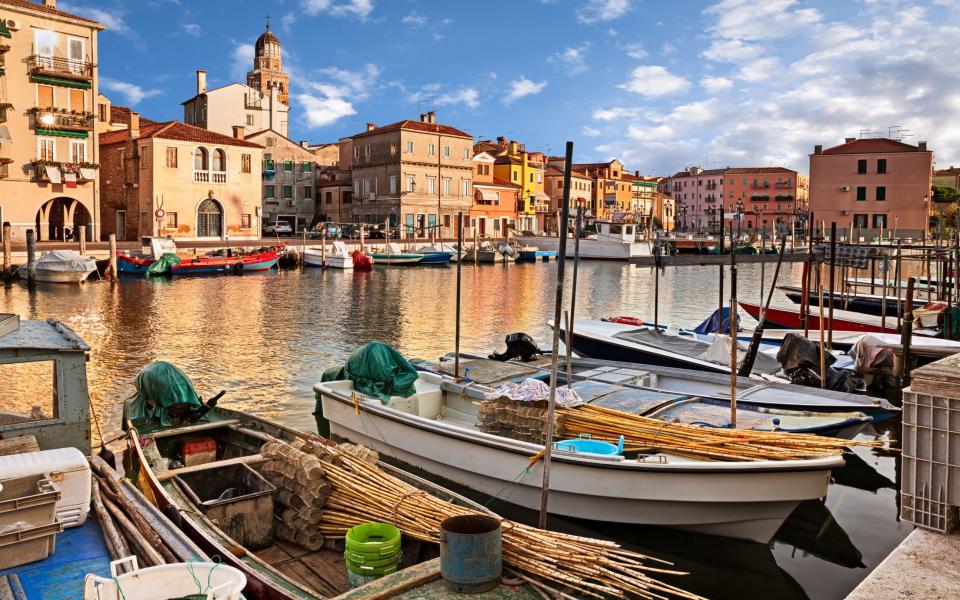
But change is afoot. In 2021, Venice banned large cruise ships from docking in the historic centre, and some now stop in Chioggia instead, including a Viking vessel with an occupancy of 930. This is a big shift for the town. People used to visit Chioggia as part of a Lagoon tour, or maybe as a day trip from the nearby Sottomarina beach resort, but now it has accidentally become a destination in its own right.
Silvia Vianello, a resident of Chioggia, tells me that the introduction of cruise ships has gone well so far. “Tourism has revitalised many businesses and shops that were on the brink of closure after the Covid pandemic, with new shops, restaurants, and support services emerging,” she says. The wider tourism economy is blossoming, too – some of those crumbling buildings are being bought up and converted into B&Bs.
“Showcasing our city is a source of great pride. We strive to ensure that visitors not only appreciate its beauty but also understand its fragility,” Vianello says.
Towards the end of my stay in Chioggia a clock tower chimed to mark aperitivo time, so I found a seat on the terrace of Bar Bellini and ordered an Aperol spritz. It was served up blood red, with a little ham sandwich that the local pigeons claimed as their own, much to the amusement of the afterwork rabble who were already on their second or third spritz. I checked my phone and saw my friend had taken the bait.
“Venice?” they asked.
“Not far away,” I replied. Although beyond the occasional aesthetic similarities, Chioggia feels a world apart. A town of fine art, gondoliers, majestic architecture, it is not. What you get instead is a glimpse of an unpretentious side of Italy, where tourism remains a force for good, where the fish is sold fresh and the Aperol served strong – which is enlightening in its own way.
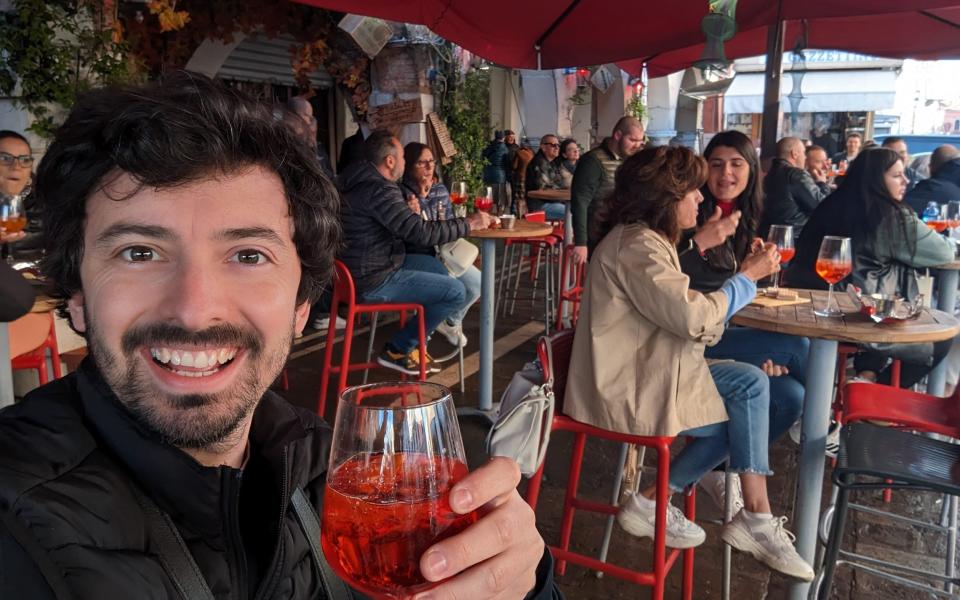
Where to eat
One of my favourite spots was Bella Venezia (ristorantebellavenezia.com), a traditional, white-tablecloth restaurant on a calle off the Corso del Popolo. Try the langoustine and saffron tortellini, or the seared tuna with fried potatoes. The fan favourite, however, is El Gato (ristoranteachioggia.it), which sources the freshest seafood from the daily market just around the corner. All throughout town you’ll find decent enough pizzerias, although beware that you’ll struggle to find anything open between 2.15pm and 7pm.
Where to stay
The Hotel Grande Italia (hotelgrandeitalia.com), with its sea views and prime location, is the only four-star hotel in Chioggia. With its marble floors and high ceilings there is a whiff of faded glory to the place, but room rates are reasonable in comparison to what you would get in a similar pile across the Lagoon. Another option is Basta Bussare (bastabussare.it), a B&B with three modern rooms in a prime location.
What to see
There are a number of churches to visit in Chioggia, including the imposing Basilica minore di San Giacomo Apostolo, which has a magnificent fresco showing the martyrdom and glorification of Saint James, and the Cathedral of Santa Maria Assunta, a fine example of Baroque architecture. Arguably Chioggia’s greatest claim to fame is the mechanical clock on Torre di Sant’Andrea, which some say is the oldest working clock in the world, dating back to 1386.

If you are in Chioggia on a Thursday you will get to experience El Zioba, the weekly market, one of the biggest in the Veneto and good for souvenirs, flowers and fresh fruit. If you miss it, there are plenty of craft shops on the main shopping arcade of Corso del Popolo, selling traditional souvenirs like refined lace or “chioggiotte” terracotta pipes.




